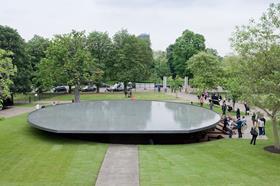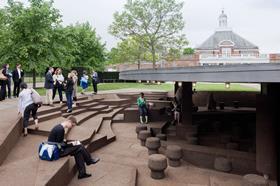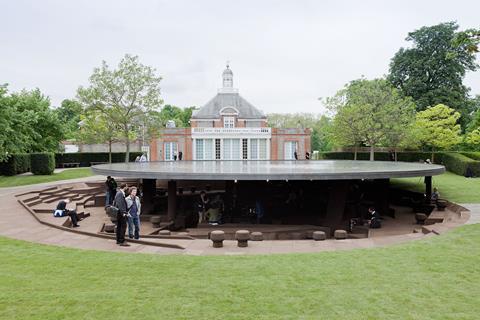The Serpentine Gallery’s latest pavilion is high in concept but unconvincing in practice
This year’s Serpentine pavilion in Kensington Gardens, designed by Herzog & de Meuron and Ai Weiwei, is one of the most understated yet.

It also does what all public buildings conventionally avoid doing, which is going down rather than soaring upwards. In so doing, it subtly and appropriately recalls Herzog & de Meuron’s bold gesture at another London project, the Tate Modern, 12 years ago. There, the visitor is invited downwards via a long ramp to reach the public entrance, after which they are rewarded with the drama of the Turbine Hall. Though the climax here is less precocious, it still plays on the same subtle manipulation of gradients and enclosure.

The 2012 pavilion is a sunken canopy under which visitors can explore the remnants of the pavilions that preceded it. A shallow pool (visible at eye level above ground) rests on the surface of the canopy, the shape of which recalls the excavated hole beneath it. In this way, the entire structure resembles a giant dislodged geological fragment.
Underneath the canopy, 11 columns represent each of the past pavilions while a 12th symbolises the current one. In a self-conscious nod to sustainability, the undercroft is clad entirely in eco-friendly cork.
The structure resembles a giant dislodged geological fragment
Like all Serpentine pavilions, the premise is high concept. But while the creators may have wished to encourage visitors to explore the surfaces beneath the park and engage with the hidden fragments of past pavilions, what they are actually encountering is more manufactured: a simulated representation of historical foundations that just happen to be slightly submerged. The experience is further sanitised by the interior structure being covered in a material that could well be natural but whose uniform application suggests synthetic forces at play.
Memory and palimpsest are subjects that both Herzog & de Meuron and Ai Weiwei have explored enthusiastically in the past and their humble homage to Serpentine pavilions gone by and the subterranean world we so rarely seek out is a worthy and intriguing concept. But the finished project is a little too contrived to convince.





























No comments yet